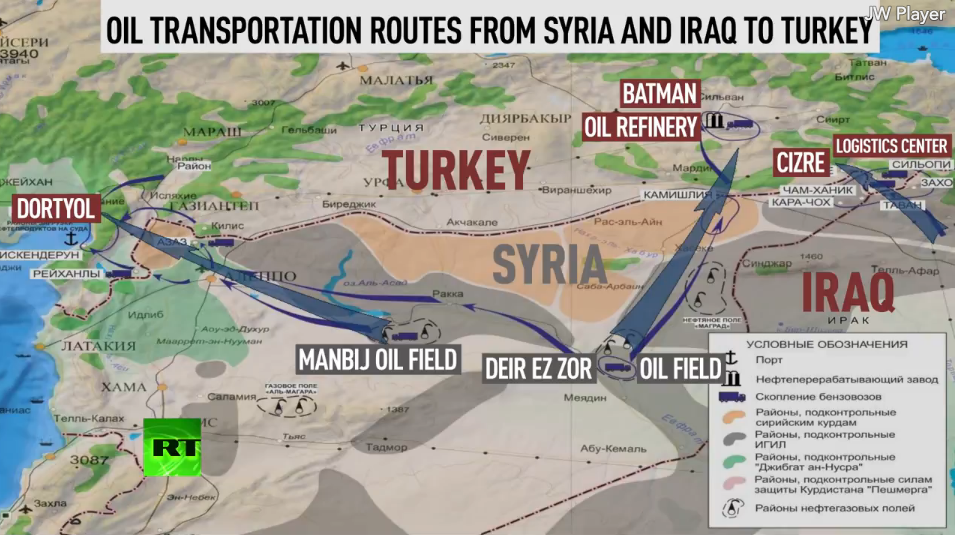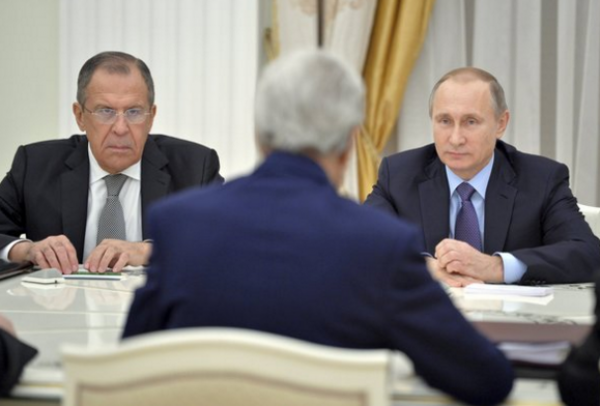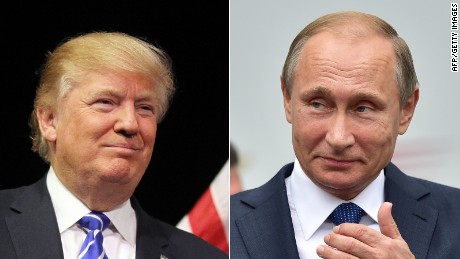Image source: vimeo.com
“In a time of deceit, telling the truth is a revolutionary act” – George Orwell
Our century so far has been overshadowed by a plague which roots,
western powers have proclaimed, can be found in Islam and its practice.
And though politicians have been careful not to publicly brand all
Muslims terrorists, the narrative has nevertheless been one of suspicion
and assumption. The words terror and Islam have been juxtaposed too
many times in the media for anyone to believe that it was not by
“design.” There has been a war of words against both Islam and Muslims.
Its aim is rather simple and only too predictable since it falls within
an equation of greed and cynicism.
By ridiculing Islam and dehumanizing its followers, western powers
have essentially laid the ground for intervention – positioning their
armies within a narrative of moral salvation and liberation when their
aims are everything but.
Iraq serves a perfect example. Even though US soldiers committed
heinous crimes against Iraqis, despite the rapes, the raids and the mass
massacres; in the face of systematic tortures and aggravated human
rights violations, Washington still claimed moral high ground, arguing
the greater good required decisive actions.
Truth is, from the moment the towers of the Trade Center tumbled down
to the ground in great swirls of smoke and ashes, the MENA and with it
all Muslims within it, have been lined up as sacrificial lambs to the
altar of imperialism.
If anyone and anything has benefited from this grand war on terror,
it is surely weapons dealers and all those behind who feeds corporate
America its fill of blood. The signs are everywhere for those who care
to see!
And if speaking the truth is conspiratorial theorism then so be it!
Terror was engineered and unleashed as a weapon of mass destruction
and a political trojan horse. What better way to control the narrative
and outcome of wars but by creating the very crisis, one intends to find
solutions to, while keeping a hand in both pots?
If not for 9/11 Afghanistan and subsequently Iraq would not have been
invaded. Arguably, without the war on terror Americans would still
enjoy some of their civil liberties, and terminologies such as rendition
and institutionalized torture might not have become generic terms. But
then again corporations would not have seen their bottom lines explode
under the influx of billions of dollars in weapon sales, security deals,
and oil concessions the way it did.
The terms “follow the money” takes on a completely different meaning when correlated to terror.
But if corporate America has indeed played the terror card to forward
its own very selfish and radical form of capitalism, it did not invent
the ideology of terror per se – it only rebranded and repackaged it to
fit its purpose.
It is again in history we must look to understand how this evil –
Wahhabism, came to be in the first place; and under whose influence it
first sparked into life. There too, the shadow of imperialism lurks …
It is crucial to understand though that ISIS, terror’s modern manifestation and expression, carries no tie with Islam. NONE!
Actually both Prophet Muhammad and Imam Ali warned us against this black plague.
In Kitab Al Fitan – a compilation of hadiths (Islamic tradition)
relating to the end of times put together by prominent scholar Nuyam bin
Hammad in 229 AH – Imam Ali recalled the Prophet saying,
“If you see the black flags, then hold your ground and do
not move your hands or your feet. A people will come forth who are weak
and have no capability, their hearts are like blocks of iron. They are
the people of the State (literally the people of Al Dawla), they do not
keep a promise or a treaty. They call to the truth but they are not its
people. Their names are (nicknames like Abu Mohammed) and their last
names (are the names of town and cities, like Al Halabi) and their hair
is loose like women’s hair. (Leave them) until they fight among
themselves, then Allah will bring the truth from whoever He wills.”
In another reference to a period of intense religious, political and social confusion Imam Ali warned,
“If you are against a group of Muslims and the kuffar
(unbelievers) are against them too, then know that you have aligned
yourself with the kuffar against your own brothers. And know that if
that is the case, then there is definitely something wrong with your
view. If you want to know where the most righteous of Muslims are then
look to where the arrows of the kuffar are pointing.”
In this extract, Imam Ali clearly refers to a time when Muslims will
cross swords with other Muslims while in alliance with non-Muslims. And
because western powers are undeniably colluding with those radicals they
claim to want to destroy – training them and funding them in plain
view, one can legitimately ponder.
Looking at events currently unfolding in the Middle East such
warnings have found a deep echo within the Muslim community and
religious leaders, among whom most prominently Sayyed Hassan Nasrallah
and Ayatollah Ali Khamenei. Both have mapped their decisions within such
religious parameters. And whether one agrees with those men or not is
not the point – understanding where they are coming from and where they
stand however, is.
And if we can agree that not all is as it seems, then could it not be that those enemies we have imagined are indeed – not?
If ISIS has certainly been sold as an Islamic movement, everything it
professes and teaches stands against Islam and its teachings. This
divide actually goes beyond Islam’s great schism – which schism it needs
to be noted remains part of this myth Saudi Arabia has been so eager on
selling the world.
If indeed religious disagreements have occurred over the centuries
and if Muslims have in truth fought and argue over the legitimacy,
legality and religious superiority of their schools of thoughts and
judicial principles, scholars did so in the knowledge and express belief
that while men are flawed, Islam is perfect.
Islam’s disagreements came about out from a desire to walk better on
God’s path, not to obliterate people with an implacable and merciless
truth.
Looking back at the long line of prophets, from Adam to Noah,
Ibrahim, Jesus, Yehia and Muhammad, all shared in the Oneness which is
God’s ultimate command, God’s boundless mercy onto His creation and His
injunction of peace. And if those holy messengers came at different
times and places in our history, the essence of their message has been
as permanent and immovable as God’s will. From Adam’s first cries of
remorse and calls for forgiveness, to Prophet Muhammad’s last breath,
God’s message onto us has always been Islam – as Islam means submission.
In truth, the only real freedom which was ever given to us is that to
submit, body and soul to The Creator of All things.
Islam did not start at Prophet Muhammad, rather it was reborn with
him and through him; a last call before the sunset, a last mercy and
guidance for us to follow – or not – a last ray of hope before evil can
get its fill and the last chapter of our fate written down.
Islam was on the first day as it will be on the last day – it is us
which have called it many things in our need to possess and label the
divine. It is us again which have strayed and plotted, coveted and
perverted to serve very earthly ambitions.
Wahhabism is no more than an engineered perversion, a
division, an abomination which has but spread like a cancer onto the
Islamic world and now threatens to destroy all religions.
Wahhabism and its legions: Al Qaeda, ISIS, Boko Haram, are but the
manifestations of a reactionary atheist movement which seeks the death
of all faiths.
Wahhabism is not of Islam and Islam will never be of Wahhabism – it
is a folly to conceive that Islam would ever sanction murder, looting
and atrocious barbarism. Islam opposes despotism, injustice, infamy ,
deceits, greed, extremism, asceticism – everything which is not balanced
and good, fair and merciful, kind and compassionate.
If anything, Wahhabism is the very negation of Islam. As many have
called it before – Islam is not Wahhabism. Wahhabism is merely the
misguided expression of one man’s political ambition – Muhammad ibn
Abdul Wahhab, a man who was recruited by Empire Britain to erode at the
fabric of Islam and crack the unity of its ummah (community).
As Wahhabism began its land and mind grab in Hijaz – now known as
Saudi Arabia – one family, Al Saud saw in this violent and reactionary
school of thought a grand opportunity to claim and retain power. This
unholy alliance has blotted the skies of Arabia for centuries, darkening
the horizon with its miasms.
Wahhabism has now given birth to a monstrous abomination – extreme
radicalism; a beast which has sprung and fed from Salafis and Wahhabis
poison, fueled by the billions of Al Saud’s petrodollars; a weapon
exploited by neo-imperialists to justify military interventions in those
wealthiest corners of the world.
But though those powers which thought themselves cunning by weaving a
network of fear around the world to better assert and enslave are
losing control over their brain-child, ISIS and its sisters in hate and
fury, as they all have gone nuclear, no longer bound by the chains their
fathers shackled them with.
ISIS’s obscene savagery epitomises the violence which is inherent and
central to Wahhabism and Salafism – its other deviance. And though the
world knows now the source of all terror, no power has yet dared speak
against it, instead the world has chosen to hate its designated victim –
Islam.
In July 2013, the European Parliament identified Wahhabism as the
main source of global terrorism, and yet the Grand Mufti of Saudi
Arabia, condemning ISIS in the strongest terms, has insisted that “the
ideas of extremism, radicalism and terrorism do not belong to Islam in
any way”. But then again the Grand Mufti might remain oblivious to the
history of Wahhabism or what Wahhabism actually professes.
Wahhabism 101
During the 18th century, revivalist movements sprang up in many parts
of the Islamic world as the Muslim imperial powers began to lose
control of peripheral territories. In the west at this time, governments
were beginning to separate church from state, but this secular ideal
was a radical innovation: as revolutionary as the commercial economy
that Europe was concurrently devising. No other culture regarded
religion as a purely private activity, separate from such worldly
pursuits as politics, so for Muslims the political fragmentation of
society was also a religious problem. Because the Quran had given
Muslims a sacred mission – to build a just economy in which everybody is
treated with equity and respect – the political well-being of the ummah
was always a matter of sacred import. If the poor were oppressed, the
vulnerable exploited or state institutions corrupt, Muslims were obliged
to make every effort to put society back on track.
If 18th-century reformers were convinced that should Muslims ever
regain lost power and prestige, they would have to return to the
fundamentals of their faith, ensuring that God – rather than materialism
or worldly ambition – dominated the political order, Wahhabism would
come to pervert such desires.
There was nothing militant about this “fundamentalism”; not yet,
rather, it was a grassroots attempt to reorient society and did not
involve jihad.
Only, if the idea of going back to the root of Islam at a time when
society had strayed from the path was indeed laudable, Wahhabism would
work to betray such ideal by twisting on its head Islam’s most sacred
pillars, perverting Islamic law and the interpretation of its Scriptures
to serve the mighty and enslave the weak.
Under Wahhabism’s interpretation of Islam, women reverted to being
objectified. Those many great women Islam saw rise under the strict
protection of the Quran, those models
Muslim women came
to look up to and aspire to become – Maryam, Khadijah, Fatimah, Zaynab;
Muhammad ibn Abdel Wahhab would have had locked up in chains in their
home.
When Islam gave women their rightful place within society, Wahhabism denied them everything.
And for those of you who continue to live under the premise that
Islam is profoundly unfair against women, do remember it is not Islam
but rather men’s interpretations of it which is the source of your ire.
Islam secured women’ status according to God’s will. Islam poses both
men and women on equal footing in terms of their faith – it is only in
their duties and responsibilities which they differ, not worthiness.
Islam calls on men to provide for women and offer them security, both
financial and physical. Under Islam women are free to marry, divorce and
work. Under Islam women cannot be bought, bartered or oppressed. Under
Islam women enjoy more freedom than most western women have been given.
It is society and cultural deviations which have denied them those
rights, not Islam.
Women rights are forever imprinted in the Quran – this reality will
never change, no matter how men chose to interpret it and falsify it.
Like
Martin Luther,
ibn Wahhab claimed he wanted to return to the earliest teachings of
Islam and eject all later medieval accretions. To achieve such ambitions
he opposed Sufism and Shia Islam, labelling them as heretical
innovations (bidah) as both opposed tyranny in faith. He went on to urge
all Muslims to reject the learned exegesis developed over the centuries
by the ulema (scholars) and interpret the texts for themselves, or
rather under his guidance.
This naturally incensed the clergy and threatened local rulers, who
believed that interfering with these popular devotions would cause
social unrest. Eventually, however, ibn Wahhab found a patron in
Mohammed Ibn Saud, a chieftain of Najd who adopted his ideas. Ibn Saud
quickly used Wahhabism to support his military campaigns for plunder and
territory, insisting such violence was all in the name of the greater
good.
To this day Al Saud’s house is following in such bloody footsteps.
Although the scriptures were so central to ibn Wahhab’s ideology, by
insisting that his version of Islam alone had validity, he distorted the
Quranic message in the most violent way. The Quran firmly states that
“There must be no coercion in matters of faith” – Quran 2:256.
It rules that Muslims must believe in the revelations of all the
great prophets (3:84) and that religious pluralism was God’s will
(5:48). Until Wahhabism came knocking, Muslims remained traditionally
wary of takfir, the practice of declaring a fellow Muslim to be an
unbeliever (kafir). Hitherto Sufism, which had developed an outstanding
appreciation of other faith traditions, had been the most popular form
of Islam and had played an important role in both social and religious
life. “Do not praise your own faith so exclusively that you disbelieve
all the rest,” urged the great mystic Ibn al-Arabi (d.1240). “God the
omniscient and omnipresent cannot be confined to any one creed.” It was
common for a Sufi to claim that he was a neither a Jew nor a Christian,
nor even a Muslim, because once you glimpsed the divine, you left these
man-made distinctions behind.
After ibn Wahhab’s death, Wahhabism became more violent, an
instrument of state terror. As Al Saud sought to establish an
independent kingdom, Abd al-Aziz Ibn Muhammad, Ibn Saud’s son and
successor, used takfir to justify the wholesale slaughter of resistant
populations. In 1801, his army sacked the holy Shia city of Karbala in
what is now Iraq, plundered the tomb of Imam Hussain, and slaughtered
thousands of Shias, including women and children. A few years later, in
1803, in fear and panic, the holy city of Mecca surrendered to the
Saudi leader, wary of that his army would do to the population.
Little do we remember the sacking of the holy city of Medina, when Al
Saud’s legions ransacked mosques, schools and homes. Al Saud’s army
murdered hundreds of men, women and children, deaf to their screams. As
imams pleaded for the most sacred relics of Islam to be protected, Al
Saud’s men pillaged and looted, setting fire to Medina’s library. Al
Saud made an example out of Medina, the very city which proved so
welcoming to Islam. On the ground which saw rise the first mosque of
Islam, Al Saud soaked the earth red with blood.
Where the footsteps of the last Prophet of God still echo, Al Saud filled the air with ghastly cries of horrors.
But such terror has been erased from history books. Such tales of
blood and savage betrayals have been swallowed whole by Al Saud as this
house attempted to re-write history and claim lineage to the house of
the prophet.
Eventually, in 1815, the Ottomans despatched Muhammad Ali Pasha,
governor of Egypt, to crush the Wahhabi forces and destroy their
capital. But Wahhabism became a political force once again during the
First World War when the Saudi chieftain – another Abd al-Aziz – made a
new push for statehood and began to carve out a large kingdom for
himself in the Middle East with his devout Bedouin army, known as the
Ikhwan, the “Brotherhood”.
In the Ikhwan we see the roots of ISIS. To break up the tribes and
wean them from the nomadic life which was deemed incompatible with
Islam, the Wahhabi clergy had settled the Bedouin in oases, where they
learned farming and the crafts of sedentary life and were indoctrinated
in Wahhabi Islam. Once they exchanged the time-honoured ghazu raid,
which typically resulted in the plunder of livestock, for the
Wahhabi-style jihad, these Bedouin fighters became more violent and
extreme, covering their faces when they encountered Europeans and
non-Saudi Arabs and fighting with lances and swords because they
disdained weaponry not used by the Prophet. In the old ghazu raids, the
Bedouin had always kept casualties to a minimum and did not attack
non-combatants. Now the Ikhwan routinely massacred “apostate” unarmed
villagers in their thousands, thought nothing of slaughtering women and
children, and routinely slit the throats of all male captives.
In 1915, Abd Al-Aziz planned to conquer Hijaz (an area in the west of
present-day Saudi Arabia that includes the cities of Mecca and Medina),
the Persian Gulf to the east of Najd, and the land that is now Syria
and Jordan in the north, but during the 1920s he tempered his ambitions
in order to acquire diplomatic standing as a nation state with Britain
and the United States. The Ikhwan, however, continued to raid the
British protectorates of Iraq, Transjordan and Kuwait, insisting that no
limits could be placed on jihad. Regarding all modernisation as bidah,
the Ikhwan also attacked Abd al-Aziz for permitting telephones, cars,
the telegraph, music and smoking – indeed, anything unknown in
Muhammad’s time – until finally Abd Al-Aziz quashed their rebellion in
1930.
After the defeat of the Ikhwan, the official Wahhabism of the Saudi
kingdom abandoned militant jihad and became a religiously conservative
movement.
But the Ikhwan spirit and its dream of territorial expansion did not
die, instead it gained new ground in the 1970s, when the Kingdom became
central to western foreign policy in the region. Washington welcomed the
Saudis’ opposition to Nasserism (the pan-Arab socialist ideology of
Egypt’s second president, Gamal Abdel Nasser) and to Soviet influence.
After the Iranian Revolution, in 1979 it gave tacit support to the
Saudis’ project of countering Shia Islam by Wahhabizing the entire
Muslim world.
Just as Nasserism posed a threat to both the Saudis and the US in
that it entailed independence and a supranational sense of belonging and
solidarity, in opposition to colonialism and feudalism, Iran Shia
democratic movement presented too much of a pull for countries in the
region to follow to be allowed to shine forth.
And so the wheels of propaganda were set in motion and Iran became
western powers and its allies’ designated enemy. Right alongside Soviet
Russia, Iran became the source of all evil, while all the while Saudi
Arabia was left to industrialize radicalism on a mass scale.
The soaring oil price created by the 1973 embargo – when Arab
petroleum producers cut off supplies to the U.S. to protest against the
Americans’ military support for Israel – gave the Kingdom all the
petrodollars it needed to export its idiosyncratic form of Islam.
The old military jihad to spread the faith was now replaced by a
cultural offensive. The Saudi-based Muslim World League opened offices
in every region inhabited by Muslims, and the Saudi ministry of religion
printed and distributed Wahhabi translations of the Quran, Wahhabi
doctrinal texts and the writings of modern thinkers whom the Saudis
found congenial, such as Sayyids Abul-A’la Maududi and Qutb, to Muslim
communities throughout the Middle East, Africa, Indonesia, the United
States and Europe. In all these places, they funded the building of
Saudi-style mosques with Wahhabi preachers and established madrasas that
provided free education for the poor, with, of course, a Wahhabi
curriculum.
Slowly Muslims’ understanding of Islam became polluted by Wahhabism
and Sunni Muslims began to think and breath Wahhabism, no longer in tune
with its own religious tradition, cut off from free-thinking Islam,
moderate Islam, compassionate Islam and non-violent Islam.
At the same time, young men from the poorer Muslim countries, such as
Egypt and Pakistan, who had felt compelled to find work in the Gulf to
support their families, associated their relative affluence with
Wahhabism and brought this faith back home with them, living in new
neighbourhoods with Saudi mosques and shopping malls that segregated the
sexes. The Saudis demanded religious conformity in return for their
munificence, so Wahhabi rejection of all other forms of Islam as well as
other faiths would reach as deeply into Bradford, England, and Buffalo,
New York, as into Pakistan, Jordan or Syria: everywhere gravely
undermining Islam’s traditional pluralism.
WRITER
CATHERINE SHAKDAM
Catherine Shakdam is a
political analyst, writer and commentator for the Middle East with a
special focus on radical movements and Yemen. The Director of Programs
at the Shafaqna Institute for Middle Eastern Studies, Catherine is also
the co-founder of Veritas Consulting. She authored Arabia’s Rising –
Under The Banner Of The First Imam.













